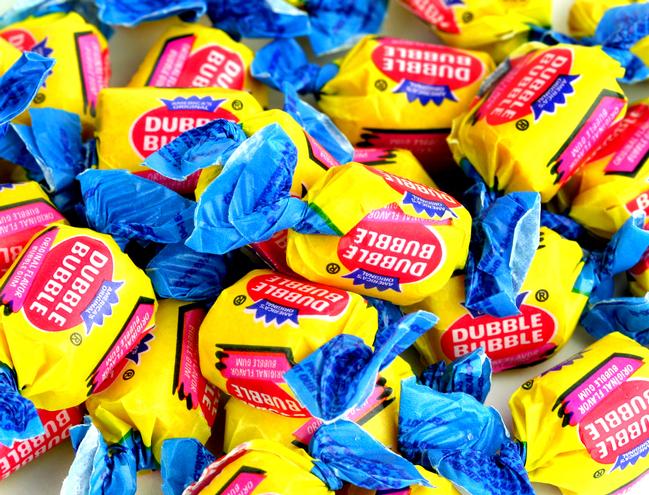Bubble gum has always been and will continue to be one of the most enjoyable candies to play with. Every kid recalls the first time they successfully blew a bubble, and most adults continue to blow bubbles unconsciously to this day. Gum is a need in almost everyone’s life. You constantly wind up sharing it with friends and family since you keep it in your purse or pocket. Most days, you probably don’t give it much thought, yet you wouldn’t want to live without it. But have you ever thought about how the concept of bubblegum came to be?
The Fleer Chewing Gum Company

I’ll bet you 10,000 gumballs that the Fleer brothers don’t come to mind when you think of bubblegum. But it all started with the Fleer brothers. The story begins in 1860, when Frank Fleer, a Philadelphia native, joined and eventually took over his father-in-law’s flavour extracts company. Fleer was in good company: his father-in-law was a Quaker, one of the confectionery industry’s oldest, most prominent, and ethical participants. Within five years, Fleer began manufacturing chewing gum, some of which he sold through vending machines in building lobbies.
Henry Fleer, Frank’s brother, established one of the Fleer company’s most spectacular successes. He coated bits of chicle in a candy coating, a process known as “panning,” which dates back to 16th-century “sugar plums” and is responsible for delights like the jelly bean, Jaw Breaker, and Fireball. He used the term “chiclets” to describe the pieces, and thus the Chiclet we all know was born. Surprised? The majority of people believe the Chiclet was always an Adams gum. The Chiclet was sold by the Fleers to Sen-Sen and then to the American Chicle Company, of which Thomas Adams was a member.
Sorry, No Bubbles & Popping

The Fleer gum company could continue to make chewing gum as part of the agreement, but the gum couldn’t contain the crucial component, chicle. Frank had explored three years prior with an idea that the major three of the early gum companies – Wrigley, The American Chicle Company, and Beech-Nut – had not attempted: making a gum that could blow bubbles. He succeeded by using natural rubber latex to create the first bubble gum, Blibber-Blubber. The Blibber-Blubber bubble popped shortly after. The texture was gritty and disintegrated, and the bubbles were difficult to form. Worse, the gum stuck to the skin with super glue-like tenacity. Fleer didn’t have much to do by the time he sold his company to American Chicle in 1909.
Frank Fleer rose to prominence again in 1913, this time with the Frank H. Fleer Corporation in Philadelphia. Babe Ruth, Gloria Swanson, and Mary Pickford were among the superstars whose sweets and trading cards were produced by the company. Even after Fleer retired and his son-in-law Gilbert Mustin took over the business, the pursuit of bubble gum persisted.
The Accountant Knows How To Pop!
During the late 1920s, William Diemer, the company’s cost accountant, would sneak into the lab after hours and experiment with the bubblegum mixture. He wasn’t a chef, chemist, or scientist, and he had no desire to be any of them. Curiosity combined with a spirit of adventure most likely drove him. Several batches failed before he eventually got it correctly, well almost. He could blow bubbles and the gum didn’t stick, but not if he left it to sit overnight. Diemer figured it out in 1928, after more experimenting, and added pink dye, the only colour he could find in the lab. That’s why bubblegum is still pink.
He showed his work to the corporation, and Mustin named it the misspelled Dubble Bubble. When the gum was ready to be marketed, Diemer went into stores and taught shopkeepers how to blow bubbles so that they could also teach their customers how to blow bubbles, who would then teach their kids, and their kids, and their kids… and thus began an American tradition!
Dubble Bubble’s Big Pop!
Since then, the Dubble Bubble has had a long and prosperous existence, even appearing in GI rations during WWII. It outperformed Topps’ Bazooka, which was released just before the war and became popular in the 1950s, and the Bowman Company’s Baloney, which was released in Brooklyn, New York, and was an early maker of trading cards. Marvel Entertainment Group currently generates 15 million pieces every day. Frank Fleer, on the other hand, died in 1921, never seeing his bubble gum thrive. William Diemer never copyrighted his innovation, created other confections, or quit the company. Instead, he became a top executive and had a pleasant career, according to his wife, after his death in 1998.
Sources:
https://en.wikipedia.org/wiki/Bubble_gum
https://www.encyclopedia.com/books/politics-and-business-magazines/fleer-corporation
https://hiddencityphila.org/2016/02/dubble-bubble-baseball-cards-philadelphias-fleer-legacy/
http://www.chewinggumfacts.com/chewing-gum-history/bubble-gum-history/

Leave a Reply